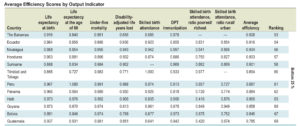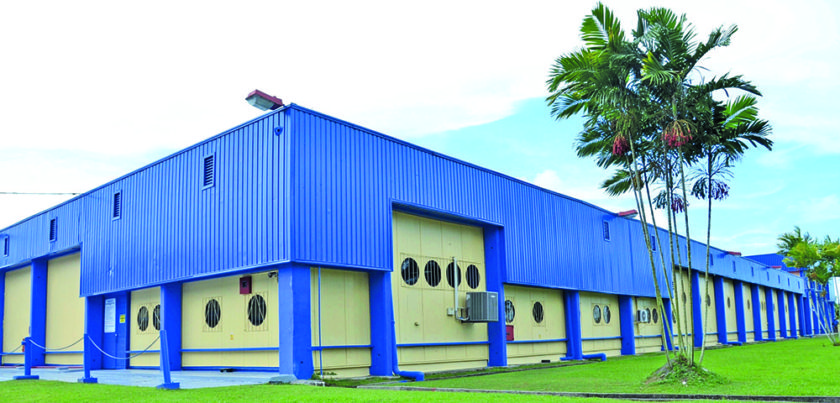
A recent report from the Inter-American Development Bank (IDB) has found that Guyana falls into the bracket of countries that misallocate public funds, particularly in the health sector, when smarter budgeting could provide better services for citizens at no extra cost.
The report is titled “Better spending for better lives: How Latin America and the Caribbean can do more with less”. It found that several countries could improve their health sector indicators by making their spending policies more in tune with international efficiency standards.
“Countries on the efficiency frontier are considered the most efficient for their level of health spending… however, 22 of 27 Latin American and Caribbean [LAC] countries are in the bottom half of the average efficiency rankings and 12 are in the bottom 25 per cent,” the report states, adding that Guyana is one such underperformer.
“Among low spenders, efficiency bottlenecks in health outcomes achieved are clearly the main issue in Guyana,” the report adds. “The analysis suggests that several Latin American and Caribbean countries could substantially improve health output indicators while keeping their current health budget stable.”
The report notes that life expectancy could be extended by four years for the Region. In several countries, including Guyana, the gain in life expectancy could be more than seven years.
The publication, which is part of the IDB’s flagship studies series Development in the Americas, also argues against across-the-board cuts. It looks at several areas, including whether countries spend too much or too little on different priorities, whether the investments are adequate to ensure a better future, and whether those expendi-tures make inequality better or worse.
Last year, Junior Public Health Minister, Dr Karen Cummings had revealed that Non-Communicable Diseases (NCDs) were laying a heavy burden on the budgetary allocation to the Public Health Ministry.
Dr Cummings had explained that the Chronic Disease Unit (CDU) has been addressing the top four causes of premature death in Guyana: cardiovascular diseases, cancer, diabetes and chronic respiratory diseases.
According to Minister Cummings, NCDs carry a huge cost for families and caregivers of those suffering from the diseases as well as Government.
“Currently, about 70 per cent of the Ministry’s budget is being spent on NCDs. Therefore, it is imperative that we develop healthy lifestyle choices and practices early so as to avoid falling prey to NCDs,” she stressed.
The Minister outlined that the Unit performed creditably in 2016 when compared to previous years. She said there was much optimism that the New Year would bring additional achievements that would further promote the work of the Unit.
In collaboration with the Pan American Health Organisation (PAHO) Guyana Country Office, the Unit had completed the first leg of the implementation plan for the years 2016-2018 in sync with the Integrated Prevention and Control of Non-Communicable Disease Strategic Plan 2013-2020.
Dr Cummings had said the Unit continued to ensure that capacity building occurred in the regional facilities. In 2016, 10 new providers were trained and placed in the health-care sector to ensure that screening for cervical cancer continued. The training also produced a new provider in the Charity area, signalling the launching of a new site for VIA screening.
As of early last year, there were 20 sites located across Guyana with a total of 33 VIA certified providers. A new cohort of 17 doctors and nurses from all six regions of the country where there are Regional Diabetic Foot Centres were trained in Diabetic Foot Care and Management.



